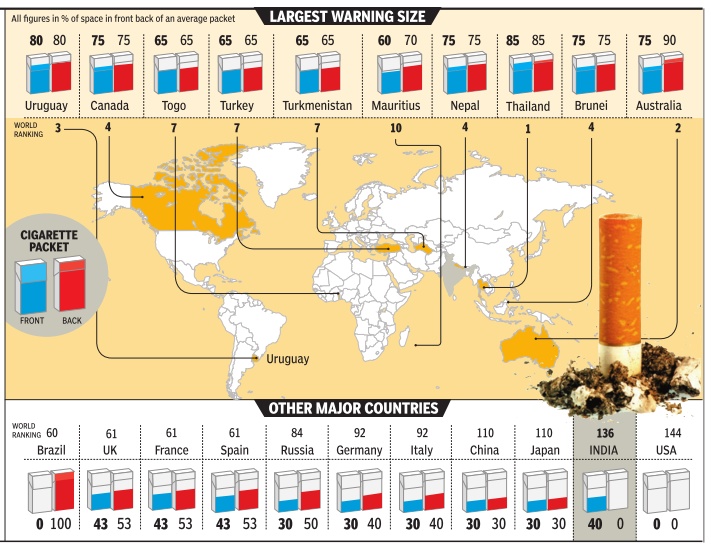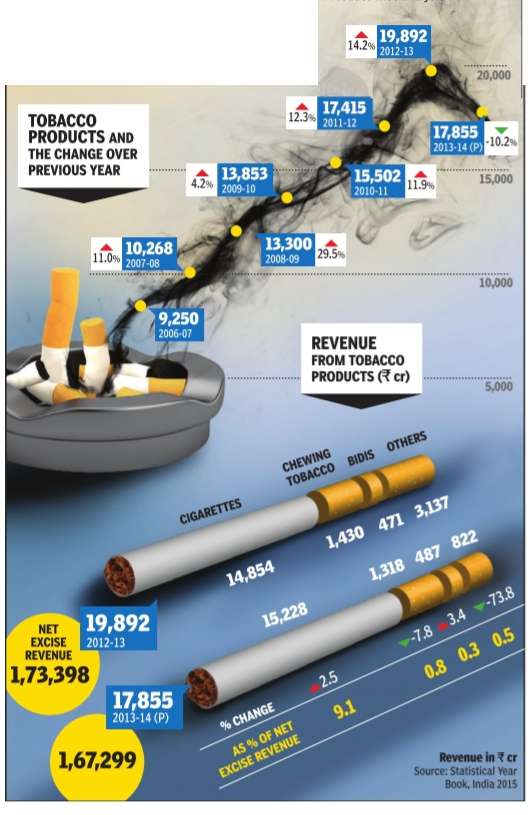Tobacco/ cigarette consumption: India
This is a collection of articles archived for the excellence of their content. |
Tobacco :India 2012-14
Jan 27 2015 SMOKE SIGNALS
According to the WHO, tobacco is one of the world's biggest public health threats as it kills about six million people every year. Raising taxes on tobacco products has been found to be the most cost-effective method of reducing tobacco use. According to the recently released India Statistical Yearbook 2015, for the first time in eight years, excise revenue from tobacco products has witnessed a fall. Product-wise analysis suggests that excise revenue from chewing tobacco and other products has decreased between 2012-13 and 2013-14 while collections from cigarettes and biris have 19,892 14.2% 2012-13 increased. The increase, however, might be linked with the higher taxes imposed in recent years.
Tobacco Labelling
The Times of India, Oct 03 2015
Source: Tobacco Labelling Research Centre, International Status Report, Sep-2014; Research: Atul Thakur

According to the guidelines of the WHO Framework Convention on Tobacco Control, well designed pictorial warnings on cigarette packets are among the most cost-effective ways to increase awareness about the health effects of smoking.On an average, a pack-a-day smoker would look at it 20 times a day or over 7,000 times a year. According to the Tobacco Labelling Research Centre, an organisation developed with the support of the WHO Framework Convention Alliance and the International Union Against Tuberculosis And Lung Disease, pictorial warnings are mandatory in 77 countries. In 2001, Canada became the first country to implement such warnings. Thailand has the world's largest warning size.
